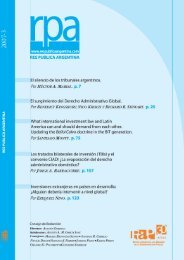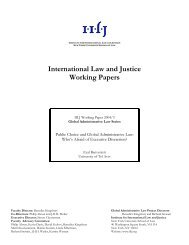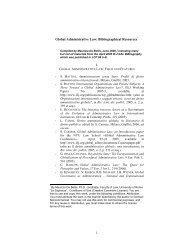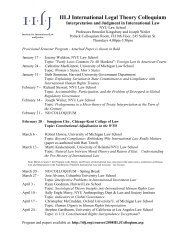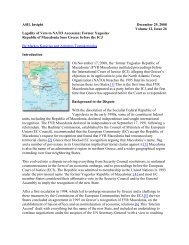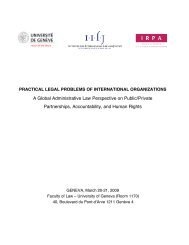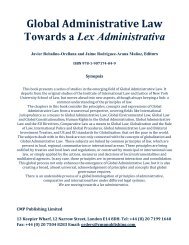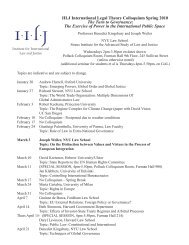brought under the dominican republic - central america - ita
brought under the dominican republic - central america - ita
brought under the dominican republic - central america - ita
You also want an ePaper? Increase the reach of your titles
YUMPU automatically turns print PDFs into web optimized ePapers that Google loves.
2.11. Burden of Proof: As far as <strong>the</strong> burden of proof is concerned, in <strong>the</strong> Tribunal‟s view,<br />
it cannot here be disputed that <strong>the</strong> party which alleges something positive has ordinarily<br />
to prove it to <strong>the</strong> satisfaction of <strong>the</strong> Tribunal. At this jurisdictional level, in<br />
o<strong>the</strong>r words, <strong>the</strong> Claimant has to prove that <strong>the</strong> Tribunal has jurisdiction. Of course,<br />
if <strong>the</strong>re are positive objections to jurisdiction, <strong>the</strong> burden lies on <strong>the</strong> Party presenting<br />
those objections, in o<strong>the</strong>r words, here <strong>the</strong> Respondent.<br />
2.12. This sharing of <strong>the</strong> burden of proof has been stated in Chevron v. Ecuador in <strong>the</strong> following<br />
terms:<br />
―As a general rule, <strong>the</strong> holder of a right raising a claim on <strong>the</strong> basis of that right in<br />
legal proceedings bears <strong>the</strong> burden of proof for all elements required for <strong>the</strong> claim.<br />
However, an exception to this rule occurs when a respondent raises a defense to <strong>the</strong><br />
effect that <strong>the</strong> claim is precluded despite <strong>the</strong> normal conditions being met. In that<br />
case, <strong>the</strong> respondent must assume <strong>the</strong> burden of proof for <strong>the</strong> elements necessary for<br />
<strong>the</strong> exception to be allowed.‖ 6<br />
2.13. The Tribunal agrees that <strong>the</strong> burden lies on a claimant who asserts a positive right<br />
and on a respondent who asserts a positive answer to <strong>the</strong> claimant. The Tribunal<br />
does not consider <strong>the</strong> latter to be an exception to <strong>the</strong> former, both being (in its view)<br />
<strong>the</strong> application from a different perspective of <strong>the</strong> same general principle that <strong>the</strong><br />
party which asserts a positive case has to prove that case. In this case, <strong>the</strong> Claimant<br />
is asserting that <strong>the</strong> Tribunal has jurisdiction over <strong>the</strong> Parties‟ dispute; and, as regards<br />
this first jurisdictional objection, <strong>the</strong> Respondent is asserting an abuse of process<br />
by <strong>the</strong> Claimant.<br />
2.14. This general approach was analysed by <strong>the</strong> Chevron tribunal in relation to a respondent‟s<br />
positive objection asserting abuse of process by a claimant, not dissimilar to<br />
<strong>the</strong> present case:<br />
―A claimant is not required to prove that its claim is asserted in a non-abusive manner;<br />
it is for <strong>the</strong> respondent to raise and prove an abuse of process as a defense.‖ 7<br />
6<br />
7<br />
Chevron Corporation (USA) and Texaco Petroleum Company (USA) v. The Republic of Ecuador,<br />
UNCITRAL, PCA Case No. 34877, Interim Award, 1 December 2008, § 138.<br />
Ibid., § 139.<br />
Part 2 – Page 4



